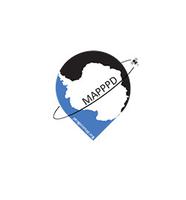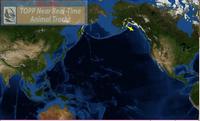S.I.N. is a list of databases that seabirders might find useful for analyses or just curiousity. If you have a database you want to add to S.I.N., please contact us
Use the search bar to the top right of the table to search for a database, or scan our quicklist
| Database | Description | |
|---|---|---|
 |
Atlas das Aves Marinhas | O Atlas das Aves Marinhas de Portugal representa a mais vasta compilação até hoje realizada de dados de distribuição e abundância de aves marinhas e costeiras que utilizam as águas portuguesas. |
 |
Atlas of Seabirds @ Sea | The Atlas of Seabirds at Sea, to be known in the vernacular as AS@S, pronounced "ay-sass", was launched on 16 October 2009, as part of the "Save Our Seabirds Festival" of BirdLife South Africa's Seabird Division. AS@S was launched and designed in such a way that it will accept data from any part of the earth's oceans. |
 |
Birdtree.org | Birdtree.org is a web application which allows users to explore the complete phylogeny of avian species as it is currently known. |
 |
Circumpolar Seabird Data Portal | The Circumpolar Seabird Data Portal is an interactive map that displays seabird colony, population, and diet records throughout the circumpolar north. This is a work in progress, so please contact the database holder for updates. |
 |
eBird | A real-time, online checklist program, eBird has revolutionized the way that the birding community reports and accesses information about birds. Launched in 2002 by the Cornell Lab of Ornithology and National Audubon Society, eBird provides rich data sources for basic information on bird abundance and distribution at a variety of spatial and temporal scales. |
 |
European Seabirds At Sea | The European Seabirds at Sea (ESAS) database is a collaborative partnership between the Joint Nature Conservation Committee (JNCC) and seabird researchers in north-west Europe. |
 |
GBIF | The Global Biodiversity Information Facility (GBIF) is an international initiative dedicated to the mobilization, online publication and use of species occurrence records from around the world. GBIF-mediated records, which are published by hundreds of institutions around the world that retain ownership of the data, are free and open access to everyone, and include at-sea occurrences for many species of seabirds in all regions of the world. |
 |
Global Seabird Colony Register | The Global Seabird Data Portal is an interactive map that displays seabird colony, population, and diet records throughout the world. This is a work in progress. Many of the colony data have errors and will be fixed in the next few months. |
 |
JNCC Seabird Monitoring Programme | The Seabird Monitoring Programme Online Database provides data from monitoring co-ordinated by the Seabird Monitoring Programme (SMP). |
 |
MAPPPD | The Mapping Application for Penguin Populations and Projected Dynamics (MAPPPD) project aims to deliver open access penguin population data for the Antarctic continent, and occupancy probabilities for flying birds around the Antarctic peninsula. |
 |
Marine IBA E-Atlas | The Marine IBA e-Atlas provides a site-based information portal for seabird conservation. This first global network of over 3000 sites covers 6.2% of the world’s oceans and was compiled by BirdLife International drawing on work from 1000 seabird scientists, government ministries and secretariats of UN conventions. It is hoped the e-Atlas will help in national and international marine protected area planning and form a valuable resource for seabird research and conservation. |
 |
New Zealand Birds Online | New Zealand Birds Online is a searchable encyclopaedia of New Zealand birds. You can find detailed information about all 457 species of New Zealand birds, including all living, extinct, fossil, vagrant and introduced bird species. |
 |
North Pacific Pelagic Seabird Database | The North Pacific Pelagic Seabird Database (NPPSD) project has collected data from researchers in Canada, Russia, and the U.S. (1972-2003). Currently we are working on integrating these different datasets into a single database that will be available over the internet through an ARC/IMS interface |
 |
North Pacific Seabird Data Portal | The Seabird Portal is an interactive map that displays seabird colony, population, and diet records throughout the North Pacific coastlines. This is a work in progress. Many of the colony data have errors and will be fixed in the next few months. |
 |
OBIS-SEAMAP | OBIS-SEAMAP, Ocean Biogeographic Information System Spatial Ecological Analysis of Megavertebrate Populations, is a spatially referenced online database, aggregating marine mammal, seabird and sea turtle observation data from across the globe. |
 |
Pacific Seabird Monitoring Database | The Pacific Seabird Monitoring Database (PSMD) captures and disseminates all salient information from seabird monitoring conducted over a large expanse of the North Pacific ocean. The format is annual observation records, grouped as time series, that depict the levels and variability of selected population parameters for a given species and location |
 |
Royal Naval Birdwatching Society Sightings | The Royal Naval Birdwatching Society hosts a global database of seabird sightings from around the world. The database contains over 35,000 georeferenced records that can be browed from their mapping service |
 |
Seabird Maps and Information for Fisheries | This website is designed to help fishers and fisheries managers assess risk of seabird bycatch in geographic areas of interest. It can also be useful to anyone with an interest in mapping seabird occurrence by region. |
| Seabird Tracking Database | The Tracking Ocean Wanderers database is the largest collection of seabird tracking data in existence. It serves as a central store for seabird tracking data from around the world and aims to help further seabird conservation work and support the tracking community. | |
 |
SeaLifeBase | SeaLifeBase is a free web-based information system on multi-cellular marine organisms other than fish (seabirds included). It develops in partnership with FishBase.org (for all fishes) and the Seas Around Us Project (reconstructed marine catches). It contains information on the ecology, distribution and life history of the organisms covered. |
 |
SeaScribe | SeaScribe is a data collection tool for offshore wildlife surveyors specifically designed to make surveying efficient and to standardize data entry and output. It provides an easy-to-use, intuitive application for the collection of wildlife survey data including geo-referenced effort and observation data. |
 |
Tagging of Pelagic Predators (TOPP) | Tagging of Pelagic Predators began in 2000 as one of 17 projects of the Census of Marine Life, an ambitious 10-year, 80-nation endeavor to assess and explain the diversity and abundance of life in the oceans, and where that life has lived, is living, and will live. |
 |
Threatened Island Biodiversity database | Islands represent less than 5% of the earth's land area yet harbor 80% of known species extinctions since 1500 and 39% of today's IUCN Critically Endangered species. Invasive vertebrates are a leading cause of insular extinctions and remain a critical threat to endangered island species today. The Threatened Island Biodiversity database is the most comprehensive global review of IUCN Threatened Species breeding on islands and at risk from invasive vertebrates. |
 |
Waterbird Population Estimates | The Waterbird Population Estimates (WPE) online database provides current and historic estimates, trends and 1% thresholds for over 800 waterbird species and 2300 biogeographic populations worldwide. This project has been developed by Wetlands International with the support of Environment Canada and the Ramsar Convention on Wetlands. |
Circumpolar Seabird Data Portal
Global Seabird Colony Register
JNCC Seabird Monitoring Programme
North Pacific Pelagic Seabird Database
North Pacific Seabird Data Portal
Pacific Seabird Monitoring Database
Royal Naval Birdwatching Society Sightings
Seabird Maps and Information for Fisheries
Tagging of Pelagic Predators (TOPP)